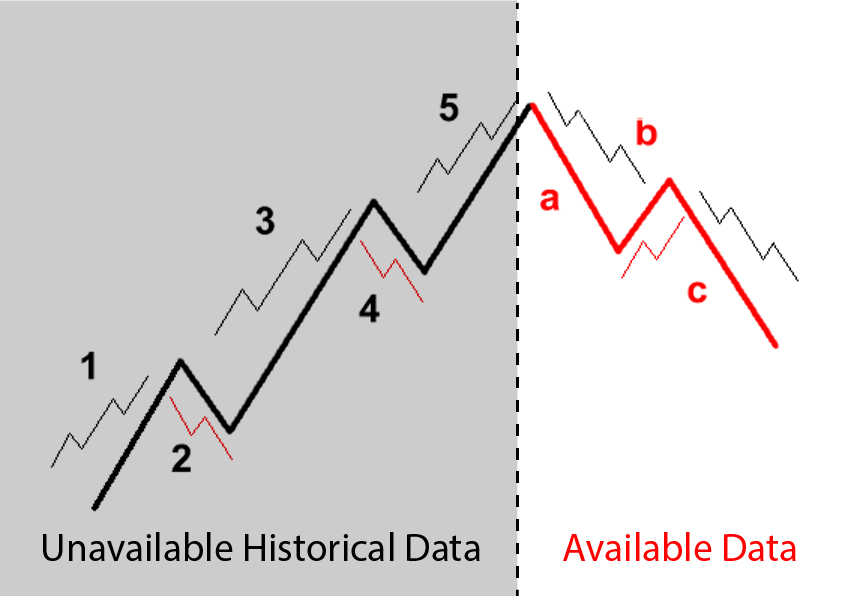
Your Starting Point Matters
One of the most common mistakes I observed and made as an Elliott Wave Technician is the failure to adopt a systematic and “Top-Down” approach to using the Elliott Wave Principle.
According to the Chaos Theory, the apparent randomness of complex and chaotic market conditions often depend on their initial conditions.
Thus, we should always strive to start any form of technical analysis right from the top with all the available data if possible.
Limited Broker Data
Unfortunately, the data available from the broker’s platform is sometimes quite “Limited” for certain financial instruments.
And quite often, it does not cover the entire trading range.
A.k.a, right from the time the underlying financial asset began trading.
A typical example of a financial asset that has a long trading history would be Gold.
Gold trading may have started in the 1970’s.
But most brokers, even established industry leaders only have data beginning from the early 2000’s.
Many would ask how this might affect the way the Elliott Wave Principle is applied?
Especially if historical data is limited or not readily available.

Lack Of Due Diligence
Taking reference from the chart shown above.
It is based on the standard 1-2-3-4-5-a-b-c pattern that most Elliott Wave Technicians are familiar with.
Understandably, majority of traders would not have done their due diligence during initial analysis.
Probably few would have gone the extra mile to research for the unavailable historical data.
A.k.a the data on the left side of the vertically dotted line, the portion of the chart that is tinted gray.
Lack of readily available historical data is often the “Achilles Heels” of most Elliott Wave Analysis…
Do note that the portion of unavailable historical data might stretch years or even decades.
And hold valuable information on how the underlying asset is performing over time.
Typically, most traders would simply start their Elliott Wave analysis on whatever data is available or provided by their brokers.
A.k.a. the data on the right side of the vertically dotted line.
The end result is likely to be an “Incomplete” technical analysis based on the Elliott Wave Principle.
Chances are, the forecast would likely be disastrous if they are looking to invest or take position trades in the longer term perspective.

Share Your Views
Compromised Analysis
Assuming we pick a random chart with only a portion of the data available, similar to the one shown earlier.
If traders base their analysis only on the available data on the right.
Most would have likely set off on the wrong foot without realizing it.
Naturally, they will assume Wave (a) in red as Wave (1) of a new downtrend.
Since the assumed Wave (1) [ Wave (a) in red ] is coming down in an “Impulsive” 5-wave manner.
And the subsequent Wave (2) [ Wave (b) in red ] corrected in a standard 3-wave Zigzag fashion.
Then, the logical assumption would be that the impending “Impulse wave” [ Wave (c) in red ] would likely be the beginning of the third wave down.
And most would assume that it will highly likely to be an extended third wave as well.
Most newbie traders would hope to ride the long haul down and catch the impending trend right at the start.
Conclusion
Unfortunately, this conflicts directly with what is actually happening on the longer time frame analysis.
Trading and investing from a “Big Picture” perspective is essential to achieving consistent profits.
Without utilizing a top-down approach, the impending reversal on the larger time frame would likely stop out most traders.
And dash their hopes of ever achieving big profits using the Elliott Wave Principle.
Shorten your learning curve by downloading our complimentary Elliott Wave Cheat Sheets.
For more articles on the Elliott Wave Principle, check out our other posts in our Elliott Wave Blog.

Nice article ever. Thanks